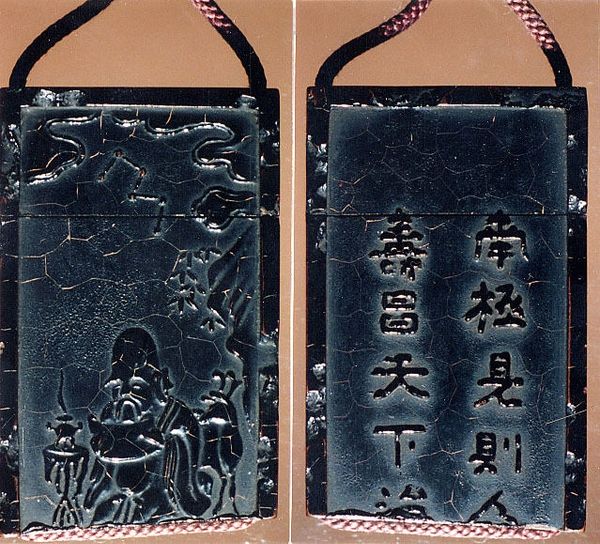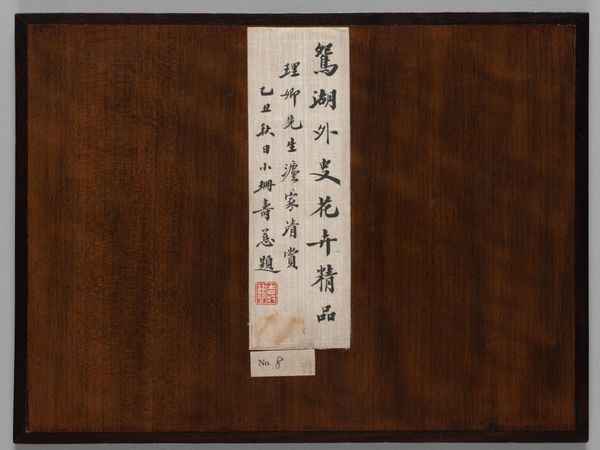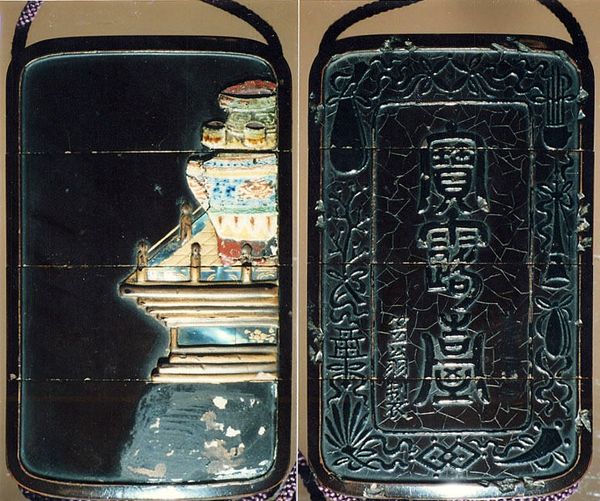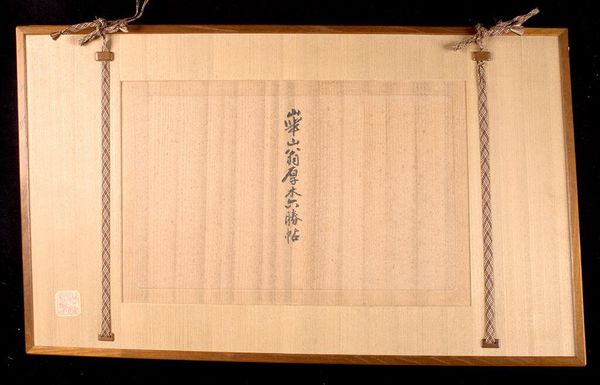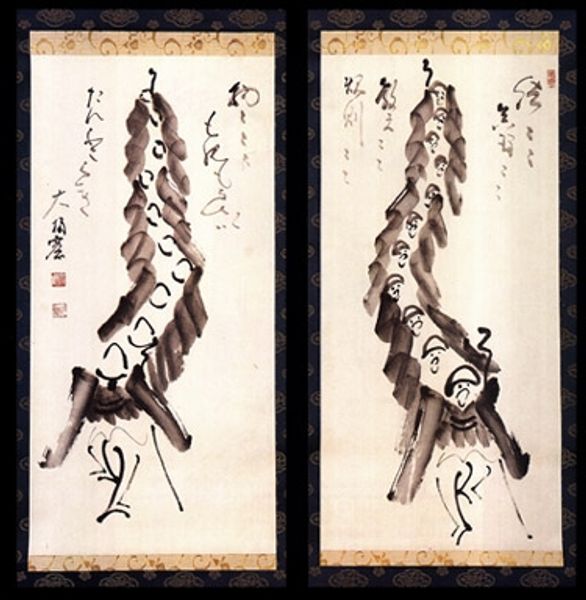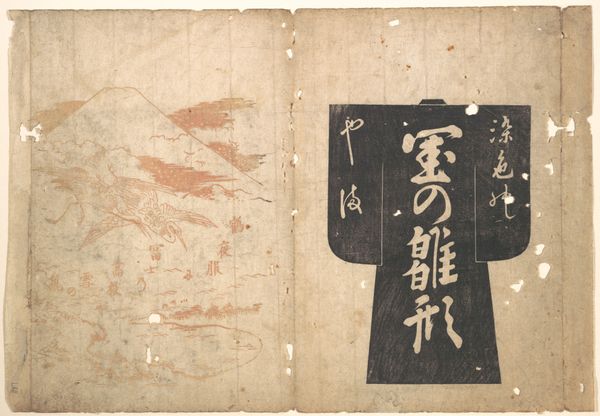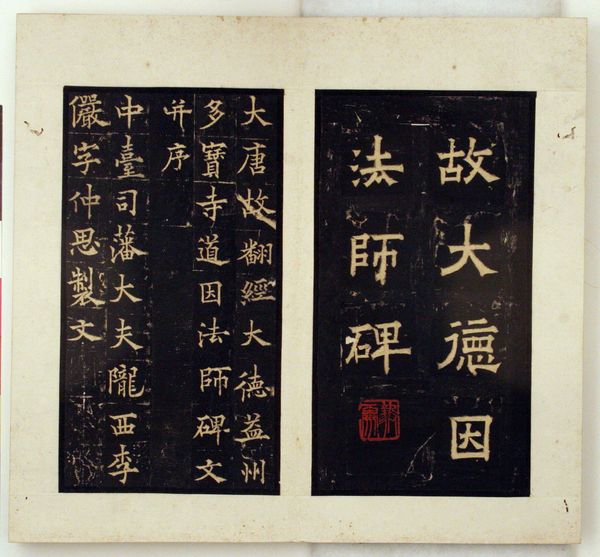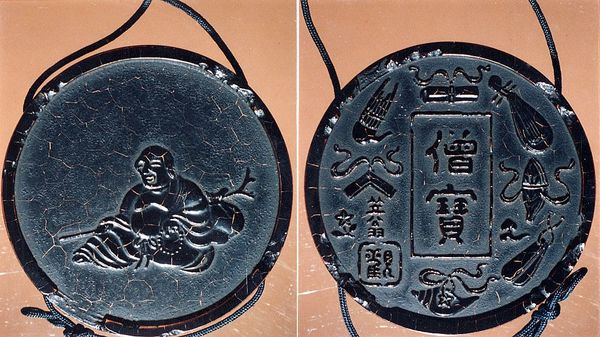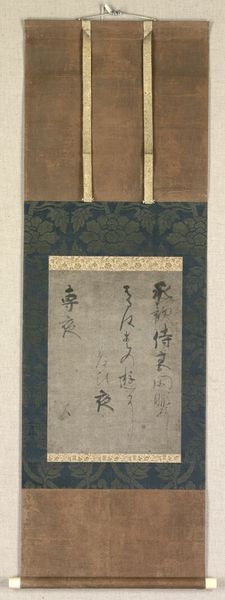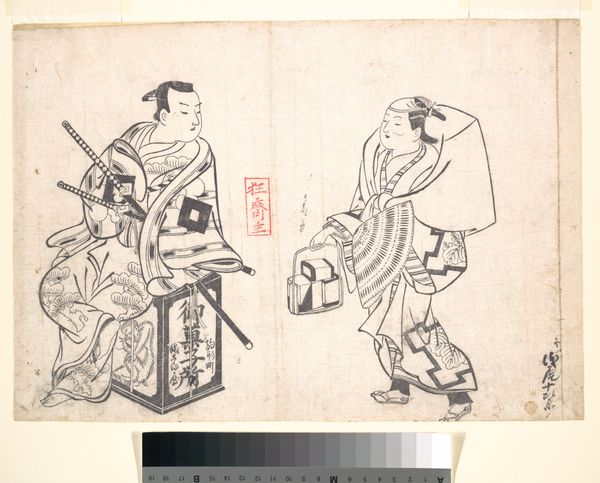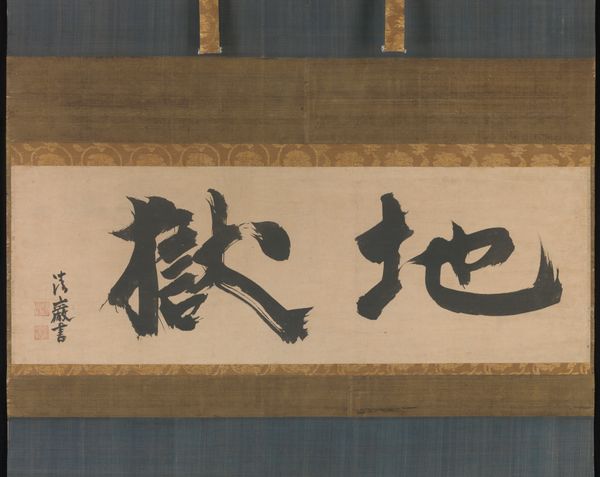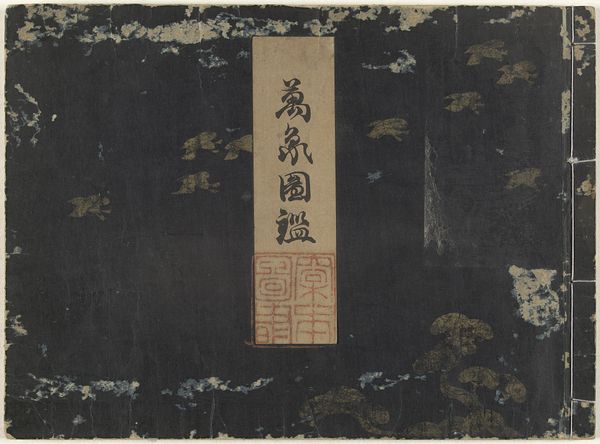
Case (Inrō) with Design of Young Woman with Flower Basket of Plum Blossoms (obverse); Four Large Characters (reverse) 19th century
0:00
0:00
tempera, painting, wood
#
portrait
#
tempera
#
painting
#
asian-art
#
ukiyo-e
#
japan
#
figuration
#
wood
#
decorative-art
#
decorative art
#
miniature
Dimensions: 3 1/4 x 2 3/8 x 13/16 in. (8.3 x 6.1 x 2 cm)
Copyright: Public Domain
Curator: This object is an Inrō, a traditional Japanese case dating from the 19th century. It's adorned with a young woman holding a flower basket on one side and four large characters on the reverse. Editor: It feels intimate. The dark lacquer punctuated by the delicate details—the subtle curve of the woman’s form, the silver lettering on the black. Curator: Crafted from wood, tempera, and likely other materials, this particular Inrō showcases both painting and decorative arts traditions. Note the use of Ukiyo-e aesthetics. The female figure seems almost floating. Editor: The gesture of the woman covering part of her face with her hand creates an impression of demureness, perhaps even forced subservience. Who made this piece and what was the identity and position of the figure? Curator: This case is attributed to Kafu Mochizuke. Focusing on purely visual aspects, her robe provides an excellent lesson on contrasting shapes and lines. Notice the intricate, circular pattern contrasted with the linearity of the skirt. It adds dynamism, no? Editor: But what about the social function? These decorative containers also carried specific connotations during the Edo period and the societal implications cannot be separated from artistic vision. Curator: Absolutely, one cannot dismiss the social function of Ukiyo-e art, particularly prints and paintings showing courtesans. Yet one must also remember, even while operating under significant restriction, this artist demonstrated exceptional talent and compositional creativity. Editor: Indeed. Even a purely formal reading doesn't invalidate the fact this woman and others were operating within a rigid framework and patriarchy. I will be more cautious interpreting pieces from Japan in that era. Curator: As will I. The artist used their skill within complex constraints to achieve something remarkable with line, form, and subtle detail.
Comments
No comments
Be the first to comment and join the conversation on the ultimate creative platform.
